Q&A: COVID-19, Solar Storms & Ancient Teeth
What happens if you overwater a plant? How does gravity actually work? And should we be cancelling mass events to contain the coronavirus? It's Q&A time on the show, and this week Phil Sansom is joined by a brainy panel of experts: plant biologist Nadia Radzman, particle physicist Chris Rogers, bioarchaeologist Emma Pomeroy, and virologist and Naked Scientist Chris Smith. Prepare to have your curiosity satisfied...
In this episode

00:45 - Meet the panel: yam beans & facemasks
Meet the panel: yam beans & facemasks
Nadia Radzman, Emma Pomeroy, & Chris Smith, University of Cambridge; Chris Rogers, Rutherford Appleton Laboratory
Before we get into the questions, it's time for Phil Sansom to introduce the panel...
Phil - Let's start with Nadia. Hi Nadia. Welcome.
Nadia - Hello.
Phil - What have you brought in to show us today, to start with?
Nadia - I have a picture here of a part of a plant that I'm studying. This particular crop is actually a forgotten crop or underutilised, or another term for it is orphan crop, which is a crop that used to be consumed traditionally, in this case, in Africa.
Chris S - Do you want me to describe for you? Because this looks like a bunch of roots and some of the roots have got bulgy bits on them, so it's almost like a root has swollen up and become very fat. How big are these things?
Nadia - A little bit bigger than an apple, I would say.
Chris S - Quite large then. Can I hazard a guess? Emma what do you reckon those are?
Emma - They look a little bit like sweet potato or something like that.
Phil - Yeah. Is it a yam, or a potato or something?
Nadia - So it is a tuber, so sweet potatoes and I guess yams, they are modified roots. However, this particular plant is in a legume family, so it's a completely different plant family than potatoes or even sweet potatoes. And it's called African yam bean.
Phil - And this is something that's been rediscovered and that you're looking to -
Nadia - Yes. So because it's a forgotten crop, it's an orphan crop. It used to be consumed in, in Africa, but now only the rural areas are still growing them. Poor farmers actually grow them for security crops. But now I'm studying them because nothing is known about this particular plant.
Phil - A rediscovered crop. Awesome! Well let's move on because next to Nadia we've got Chris Rogers who's a particle physicist. Hi Chris.
Chris R - Hi. So actually I'm an accelerator physicist. Oh, that means I design particle accelerators. There is a subtle difference.
Phil - Well, what have you brought in to show us?
Chris R - So in fact, what I brought in is a little bit of a particle accelerator, so I'll show it to the other guests. It looks like a small black foil. So it's, it's about the size of a very small playing card and it's actually one micron thick, so about the same thickness as a bacterium. And it's actually how we get our beam into our particle accelerator.
Phil - What's it made of?
Chris R - So it's made of carbon.
Phil - So that's an extremely thin sheet of carbon?
Chris R - Extremely thin sheet of carbon.
Chris S - What does that actually do?
Chris R - So what we do, when we want to get our beam of particles into our accelerator, it's really hard. So imagine when we start off with our particles, we just start off with a gas bottle with hydrogen gas, and we put a spark across that hydrogen gas and it makes ions come out. So we ionise the gas. We accelerate that beam up and then we want to get it into a ring accelerator. If we put protons into that ring, then as the protons come back round to the start again, those protons would knock into each other and we wouldn't really be able to get the protons into the ring properly. What we do is we accelerate a special sort of iron called an H minus ion. So instead of having a proton, we have a proton with two electrons attached. When those H minus ions go through this really thin foil, it knocks those electrons off. And then we can bring those protons around in our ring.
Chris S - So it's basically traffic management for particle accelerators.
Chris R - That's exactly what it is.
Phil - Let's definitely come back to this area, but for now we've got Emma Pomeroy, third in our panel. Emma, welcome. What have you brought? You're a bio archeologist.
Emma - Yes I am. Yes. And I've brought with me a cast, so a replica, of a Neanderthal skull in an individual that we know as Shanidar 1. So it comes from the site of Shanidar cave and Iraqi Kurdistan, which is where I'm currently conducting excavations. But this chap was actually found back in the 1950s.
Phil - That's amazing. It looks very, very much like a human skull.
Emma - And actually Neanderthals were pretty similar to us over all. If we look at the whole kind of span of the evolution of our species and our lineage, they're not so far away from us. They are sort of more robust in their brow ridges and in their face and the middle of their face projects a bit more. Critically, they didn't have a chin. So one of our modern human characteristics is that we have a really prominent chin and Neanderthals didn't. But other than that they look pretty similar to us.
Chris S - Can I just ask, when did they first appear?
Emma - Well that's a good question. We see species that have some of their characteristics from about 450,000 years ago. So we think probably sort of about 300,000 years ago or perhaps a little more more recently. So about the same time as modern humans did actually.
Chris S - So was there a sort of split in the evolutionary tree then? So our ancestors are both Neanderthals and anatomically modern humans like us, and they sort of went their separate ways and there was a path that took them down the Neanderthal line and a path that became us.
Emma - Exactly. So if you imagine sort of going back before our direct ancestor and before the direct ancestor of Neanderthals, our ancestors before that actually diverged. So some of them moved out into Europe and eventually evolved into Neanderthals and some of them stayed within Africa and eventually evolved into modern humans. And then after that, modern humans spread out into Europe and into Asia and Neanderthals eventually when mostly extinct apart from the little trace of DNA that many of us carry today.
Phil - Finally on our panel we've got what should be quite a familiar voice to many of you listeners, this is Chris Smith, a virologist at Cambridge. Chris, how are you?
Chris S - Yeah, I'm good.
Phil - How does it feel to be on the other side of the desk?
Chris S - I'm pretty nervous because we're going to do the quiz and I always take great delight in humiliating all the guests and you've made me a panelist! We should say the reason you made me a panelist is because you know the world is in the grip of what we're trying not to call a pandemic. So we thought it might be quite interesting for people to have the opportunity to ask some questions about this new coronavirus that's circulating. Because I've been doing quite a bit of that so I thought it would be very nice to help people if they want to ask anything about that.
Phil - Now's the time actually! Let me just throw it to the other three of you. Do any of you have a perspective or a question that you want to share or ask Chris?
Emma - We hear lots of advice about things we should and shouldn't be doing to avoid catching coronavirus and spreading it. So do face masks work? Do hand gels work?
Chris S - Are you doing anything different?
Emma - Not really cause I'm always careful about washing my hands and that kind of thing. But should I be?
Chris S - Is anyone in here doing anything different, Chris?
Chris R - I had a cold on Friday so worked from home but maybe that means you guys need to stay away from me.
Chris S - Do you like the way he's come in and turned up at the studio? Sat down opposite all of us, shaken all our hands and now he's telling us he's got a cold!
Phil - I accidentally drank from Chris's water glass half a second ago.
Chris R - We'll wait for you to cough later on.
Chris S - The answer to the face mask question is actually probably just save your money. So the face masks that are not the ones used in hospital are not effective and that's for two reasons. One is that people tend to use them wrong. They put them on, take them off, put them on, take them off, touch all over them. For instance, when they want to eat and drink things and that transfers virus particles from the surfaces they'd been touching probably to the inside of the mask when they touch it. So it automatically brings the virus close to their face where they're trying to keep it away from. The other is that they quite quickly get damp because of the water in your breath and this means that the particles of virus can pass through the gaps in the mask quite efficiently. And also the masks don't have a very good stringency. There are big gaps between the fibres which, to the something on the scale of a virus, which is about one 10000th of a millimetre across, that's like the tunnel under the Thames. It's absolutely huge. So no obstacle whatsoever for the virus.
They also don't tend to be worn properly. People leave big gaps around the sides. So when you breathe out or breathe in, it just pulls air in from the room and into the side. So that's probably a no for masks, I would save your money. I've said to somebody, go and buy a beer instead because you'll enjoy having that in your mouth more than the mask. It'll probably cost you less based on the amount of profiteering that's going on at the moment. And it will give you equivalent if not more protection from the virus. It will also be more fun.

09:32 - What happens if you overwater a plant?
What happens if you overwater a plant?
This question is from Mel, for plant scientist Nadia Radzman...
Nadia - If you overwater a plant, what happens is that you would have this stagnant water around the soil, right? So this would create a waterlogging effect. In all plant tissues, you need to have access to oxygen. So if you have a waterlogged plant, meaning that it couldn't access the oxygen anymore, this would create a low oxygen environment.
Chris S - Well how does hydroponics work then? Because you dangle the roots in water all the time, don't you?
Nadia - Yeah, so there are two types of hydroponics. So in large scale hydroponics, what you have is the water is aerated so you wouldn't have these low oxygen effects. And another one is a passive method where just a bit of the root actually touches the water so the plant is still happy.
Phil - But otherwise it seems like it's actually drowning, because it's not go enough oxygen.
Nadia - It is drowning. So what happens is if it's low oxygen, you cannot take up water inside the plant.
Chris S - Well I was going to say, what about plants that live in water?
Nadia - So they have special modifications in their roots. The tissues are called aerenchyma and they actually store, well, air! To actually provide the oxygen to the plant.
Chris S - Do they pump it there then? How does the air get into those bodies then?
Nadia - I'm actually not sure about that.
Chris S - I know that if you cut a water lily across, the stems have got a lot of hollow voids, in the stems.
Nadia - Yes. That is to actually provide the oxygen to the whole of the plant.

11:12 - How does gravity actually work?
How does gravity actually work?
Tony sent this in via the webform, so particle physicist Chris Rogers took it on...
Chris R - So I have bad news, and the bad news is that no one really knows.
Phil - Oh no!
Chris R - I'm so sorry. But I can tell you what we do know. So in the 17th century, Newton and Hooke together figured out the laws of gravity, and they also figured out some things about force. So when we have a force, we push something which is really heavy, we accelerate it a little bit; and if we push something that's really light, we accelerate it a lot. That was one of Newton's famous laws of physics. And then the law of gravity says that a really heavy body will attract things more than a really light body. Now Einstein, he's a clever chap, right? So he came along...
Phil - I've heard that, yeah. He's got a good reputation.
Chris R - He does, doesn't he? So he came along at the beginning of the 20th century and what he said, he had a Eureka moment where he actually thought, well hang on, you've got these two different definitions of mass. One is that mass makes massive amounts of gravity, pulls things together really strongly. And the other one is that if you have a really massive object, it's really hard to push it. What happens if we say that those two definitions of mass are actually the same? And so this is something called the equivalence principle. And so together with another principle which he had, the covariance principle, the principle that the laws of physics are the same no matter how quickly you're moving, he tied those together to make a new theory of gravity as a sort of curvature of spacetime, because you can't tell whether it's just an acceleration or whether you're near to a gravitating body like a big planet or something like that.
Phil - I don't quite understand how you get to curved spacetime.
Chris R - Well it's an interesting question. So if you imagine for example, in a curved space time...
Phil - I can't imagine that. I have no idea what that looks like.
Chris R - Yeah, no, you do!
Phil - Nadia?
Nadia - Is it the same as getting close and closer to a black hole and everything is distorted? Is that something…
Chris R - Well so if you walk around the earth, that's like walking round a curved spacetime. If you start at the equator and walk North, you end up at the North pole of course. It doesn't matter where on the equate you start, you will always end up at the North pole. So curved spacetime because parallel lines are no longer parallel.
Chris S - People often use the analogy, Chris, of dropping a very heavy bowling ball on a trampoline, which distorts the trampoline down, bends the trampoline downwards. And if you were to roll a ball across the trampoline, it would roll down a hill. And they're saying, that is a two dimensional manifestation of the curvature of spacetime, if you imagine space being the fabric that's the surface of that trampoline. Is that a reasonable approximation?
Chris R - It's a lovely analogy actually. So it's exactly right. And it does show how spacetime can be curved.
Phil - So curving space time, is that what we're left with?
Chris R - So some theorists come along, they say that we have potentially a sort of subatomic particle called a graviton. Gravitons are really hard to see because gravity is a, what we think of as being a very weak force. But there's another, more fundamental problem. If we put these gravitons into our theories, turns out that the gravitons don't work in the theories, that you get infinite forces going around, which obviously isn't physical. So until we do observe a graviton it's only a theory.
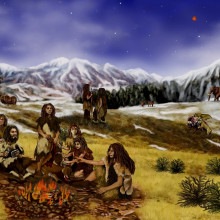
16:21 - How different were ancient people to us today?
How different were ancient people to us today?
This question comes from Adam, and bioarchaeologist Emma Pomeroy has an answer...
Emma - That's a great question. So if we're talking about modern humans, our own species, we've been around for about 300,000 years. And actually for much of that time we were hunter-gatherers. So we got our food by hunting and gathering rather than by cultivating crops and things like that. And so some of the characteristics that our ancestors would have had would be that they were much more active than us, so their bones were actually rather stronger than ours, because our bone strength depends on how active we are during our life. We imagine that people in the past were much shorter, right. And that we're taller today, but actually that's probably not the case. Up until about 10,000 years ago. People were similar in height, actually, certainly in Europe to what we are today, partly because the nutrition was good, but they didn't have the disease burden that we have. And that really comes about with agriculture and settling down.
Chris S - Did you see the paper, Emma, that came out of the U.S. by looking at hundreds of years worth of medical records and found that our temperatures today are a bit lower?
Emma - Yeah, I mean that's absolutely fascinating research, and I think it sort of fits in with the pattern. So maybe tens of thousand years ago people were not much shorter, but if we go back a few hundred years, people were substantially shorter. And perhaps one of the things that was using up the energy that they had, was fighting off infections and having this higher body temperature all the time. So super interesting.
Chris R - Have the changes been genetic or have they been environmental.
Emma - The answer to that is possibly a bit of both. It's very hard. So with things like stature, it's very hard, because it's determined by many different genes, hundreds even. We find it hard to actually track how that's changed. But some recent work is suggesting that actually, the genetics of height has changed, but things like height and the robusticity of our skeleton, so how strong our skeleton is, have a big environmental component to them as well.
Phil - Nadia?
Nadia - If we are quite different than our ancestors, how relevant is the Palaeo Diet?
Emma - That's a really interesting question. So I think from our perspective as sort of, evolutionary biologists, the Palaeo Diet's not really something that ever existed, so human populations have lived all over the world with all kinds of different diets, as hunter-gatherers. And there's no one diet that we can say: This is what we ought to be eating. So yeah, unfortunately the Palaeo Diet, it's not really a very convincing argument.

19:03 - Should I postpone chemo to avoid COVID-19?
Should I postpone chemo to avoid COVID-19?
We had this important question come in from listener Lorna, for virologist Chris Smith...
Chris S - The answer to this is at the moment, the risk of coronavirus in the population is low, so the chances of you encountering it is low. But you're right to be concerned, because people who are at greater risk are those whose immune system doesn't work as well as someone who's got a fully functioning immune system, and the way chemotherapy drugs work, not exclusively, but some of them, is to switch off the way cells divide, and that includes your immune system. So it can cause the immune system to stop working quite as well. Now the risk placed on your health from breast cancer, is almost certainly, at the moment, going to be higher than the risk posed by coronavirus infection.
Now, what you could do if you are concerned about this is to do two things. If you need to go to clinic appointments, then everyone who's going to a clinic appointment should, if they have any symptoms whatsoever of any kind of infection, as a courtesy, should phone the clinic and warn them, because that means the clinic could see that person at the end of the list, and they don't then sit in a waiting room full of people who don't have the infection and give it to them. So if we all do that, and we can all rely on people to do that, then it means that you're not at risk going to say, clinic appointments. And the same goes for your general practice.
At the same time you may think, well I don't feel comfortable going out into mass gatherings and things while I'm at higher risk. And the same would apply for any kind of viral infection, whether it's flu or just the common cold, because all of these things will provoke a more intense infection in a person who's taking drugs like these ones, which will suppress the immune system for a while. Under those circumstances you might say, well, I'm going to just use a common sense approach, and I'm going to keep myself away from people who obviously have symptoms. I'm going to warn my friends and family, look, if you've got some kind of symptoms or you're not feeling very well, don't come over while you've got them. Don't come and see me. Wait until you're feeling better, and at the same time don't go out to various places where there will be lots of people who you can't warn in advance, and then once you're over your course of chemotherapy and hopefully you're all better, everything should come back to normal and the risks will pass and you'll be fine again.
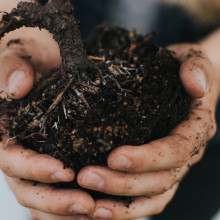
21:22 - Why do plants like warm soil?
Why do plants like warm soil?
This question from listener Grant has really grown on us. Plant biologist Nadia Radzman answered it...
Nadia - Warmer soil is important for two things. One is for growth and nutrient uptake. So low soil temperature would actually increase water viscosity, and also reduces the root permeability to uptake the water. This would then affect nutrient uptake, because that is like part of the root-to-shoot transport, through xylem, that needs water. So this would pretty much affect the plant growth. Another one is for germination, but this is a little bit tricky because the seeds actually need to have low temperature periods, to break dormancy. And then when it's in a warmer temperature, when you can actually tell, from winter to spring, it starts to germinate in warmer soil.
Phil - So is it part that water and nutrients, those flow more easily; and part that it just triggers the seed germination itself?
Nadia - Yeah. Actually the breaking of dormancy is because of the low temperature during wintertime. There are two different hormones that are regulating this. So one is abscisic acid, and this pretty much, it inhibits germination and the other one is gibberellic acid. And this promotes germination. And during the low temperature in winter you have increased gibberellic acid and reduced abscisic acid. And this breaks the dormancy. So then when spring comes it can grow.
Phil - Chris Smith?
Chris S - Nadia, it's an extreme of temperature, but heat from fire, and the products of burning can also stimulate some seeds to grow, can't they? Because a friend of mine in Australia actually discovered what some of these molecules are by burning bits of tissue paper, and they're getting the molecules out and showing they would make some seeds germinate, how does that work?
Nadia - So actually, there is a particle from smoke called karrikin, and this is actually a plant hormone. So this actually comes from smoke and this is also partly why some seeds will actually start to germinate after fire.
Chris S - Why would the seeds want to do that? Why is it beneficial to the plant to grow after a fire?
Nadia - It's part of the cycle of the forest itself. Some forests like for example in Australia actually need this particular cycle.

What's a solar storm made up of?
Katie asked this physics question, so we put it to Chris Rogers...
Chris R - A solar storm is a really interesting phenomenon. It's to do with space weather. What we see on Earth is, we see the magnetic field of the Earth actually changes, and we see a really fantastic light display with the aurora, and what's going on is charged particles are flying from the Sun towards the Earth and bashing into the Earth. You get this charged plasma and that actually physically changes the Earth's magnetic field.
Phil - What are those particles?
Chris R - Typically they're protons, or ions, or electrons. So the Sun is mostly made up of hydrogen with a bit of helium mixed in. And so typically you're getting ions from that hydrogen, helium, and electrons associated with those ions.
Phil - What are the effects of this? When you've got all these particles bashing into the Earth and its atmosphere?
Chris R - So if it's a small solar storm, then you see a really bright Aurora. So the whole sky lights up in the far North. With a really bright solar storm, you can get amazing effects. So there's a famous event in the 19th century called the Carrington Event, where just at the beginning of the invention of electricity, they had telegraph wires. The telegraph wires, would actually spark out. You'd get these really big sparks coming from the telegraph wires.
Chris S - Can the Earth gain mass that way? And the reason for asking you, Chris, is that Steve Rampley, has just pinged us an email and said, "is the mass of the Earth changing? Is one way that the Earth's mass can change from particles coming in from outer space?"
Chris R - That's an interesting question. I don't know whether the Earth's mass can change, but I do know that the Sun's mass can change. So the Sun is slowly losing mass as it fires off all of these high energy particles, those particles are flying out into the intergalactic medium and so the Sun itself is losing mass.
Chris S - Is it not also losing mass because it's sending energy to us in the form of light? And that light must have come from a process that consumed mass in the Sun in order to produce the energy that it radiated at us in the first place. So that would also lose mass for that reason.
Chris R - That's a really good point. So of course Einstein tells us again, Einstein again, that clever guy, he tells us that mass and energy are interchangeable. So when hydrogen fusion happens, hydrogen fuses into helium and the mass of the helium is lower than the mass of the hydrogen.
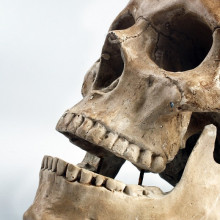
26:08 - Did prehistoric people get tooth problems?
Did prehistoric people get tooth problems?
We put this painful-sounding question to bioarchaeologist Emma Pomeroy...
Emma - Yeah, they did. I mean if we think about the kind of tooth problems we have today, we associate them with eating too much sugar. So we get things like cavities and we have to get them filled. And while people didn't get them as much in the past before we had like refined sugar and foods like that, they did still have these problems and we can see evidence of a tooth problem, it's actually going right back to dinosaurs, but certainly in people, and it depends what they ate in part. So even some hunter-gatherers who we think are eating a very kind of, healthy diet with not much sugar in it, in some populations where they actually relied more on sugary fruits, for example, they could have actually, really high rates of cavities that were similar, in fact to some modern populations today who do eat refined sugar.
Phil - And you sort of just have to deal with it?
Emma - Yeah, I mean before dentists it would have been a bit of a nightmare, I think. We do see that there were attempts actually to try and treat cavities in the teeth or damage to the teeth. We've got examples that go back as far as kind of, 14-15,000 years. And with those they were using things like bitumen to try and fill holes and bits of hair, and things like that.
Phil - Oh that sounds horribly painful!
Emma - Yeah, it doesn't sound good. There's one from about 6,000 years ago, where they've tried to fill a crack in the tooth with beeswax and that sounds a little bit nicer to me. But going back much further, we can actually see what we call interproximal grooves. And these are grooves between the teeth where individuals have actually been sticking, say sticks or feathers, or something between the teeth, presumably to try and relieve pain. And they've been doing that so much it's actually gouged out a groove in the tooth.
Chris S - Was it not just tooth picking? They were trying to dislodge bits of meat and other muck from between the teeth?
Emma - But it tends to be between particular pairs of teeth, and that suggested that it's a chronic issue with those particular teeth, either that or it's just an idiosyncratic behavior. So someone's individual, kind of, habits. But in some cases, there is one Neanderthal example where we can actually see that they had periodontitis, so inflammation of the gums, and they may well have been doing that to try and alleviate some of the pain and discomfort associated with it.
Chris S - So you could see the decay there alongside the evidence of the scraping.
Emma - Yeah, so in that case, what you can see is that actually the bone that holds the teeth in, has started to recede back in response to that infection of the gums. But we don't see that in all cases. So maybe sometimes it was just people sitting and picking away at their teeth out of boredom or something.
Phil - It all makes you grateful for dentists today, doesn't it?
Emma - Absolutely. That's what I always say to our students when we're doing practicals.
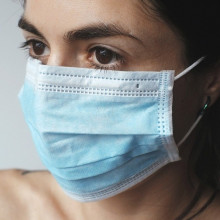
28:47 - What makes a mild coronavirus infection?
What makes a mild coronavirus infection?
We had this question in from listener Paul for virologist Chris Smith...
Chris S - It's certainly true, that if we look at the data, and we're looking at data at the moment from, largely China, because obviously they're ahead of the world in the numbers of cases they've had and their collection of the data. This will probably become clearer as other countries, certainly Italy for example, which is having a lot of coronavirus cases, and the UK too, we're going to join the party and contribute our own data.
At the moment, there are very few children there who have had this infection, or have had severe outcomes from this infection, or who have died from this infection. The vast majority of the cases have been in older people. The vast majority of the fatal cases have been in very old people, and it looks like men are disproportionately likely to die compared with women. Although it's an equal opportunities virus, it seems to infect both men and women equally. Now, why is it then that the children appear to be not getting it?
Well, actually what I think is happening, and we have to speculate because we don't know for sure yet, this will become clearer, but what I think is probably going on is that the children are not getting overt symptoms, so they're not getting tested, so they're not registering in the data as having had this infection, but they have had it. They've had it in a very mild way. And a bit similar is chicken pox. If you think about it, when we catch chickenpox as kids, and in countries like the UK, 90% of us have had chicken pox. Most of us catch it within the first few years of our lives, and we'll get two or three spots, maybe a few more than that, but we get a very mild infection. If you're unlucky enough to catch chickenpox when you're older, you tend to get a much more severe infection, and there are lots of viruses which do produce a more serious manifestation the older you get. So it may well be that in this case it's doing the same sort of thing, and that children are catching it, they're getting very trivial symptoms and we're not regarding this as, Oh, they've got this coronavirus. They've not been tested, so they're escaping from scrutiny, and it's giving us a false impression that they're either not being effected or they're immune. As far as we know, no one is immune to this virus yet because it's new. So no one's seen it before. No one has immunity, and that's why it has the potential to spread across the entire world population.

32:35 - Quiz: from soft stuff to weird weather!
Quiz: from soft stuff to weird weather!
Nadia Radzman, Emma Pomeroy, & Chris Smith, University of Cambridge; Chris Rogers, Rutherford Appleton Laboratory
It's time for our famously fiendish Naked Scientists quiz! In it to win it are plant biologist Nadia Radzman and particle physicist Chris Rogers, facing off against bioarchaeologist Emma Pomeroy and virologist Chris Smith. There's everything to play for...
Phil - It's quiz time! It's the part of the show that you've all been waiting for, and our panelists are going to compete for the prize beyond price: that's to be awarded Naked Scientists' Big Brains of the Month. We're going to divide you into Team 1, that's Nadia and Chris Rogers; and you're going to be facing off against Team 2, that's you Emma and Chris Smith. And I hope you're ready, because it's time for Round 1. This round is called Count 'Em Up. Okay, Team 1, here's Question 1. Which do you think there are more of: transistors in the world's largest supercomputer, or bacteria in the average human body?
Chris R - So I can help you with supercomputers because I know it's an exaflop machine - two exaflops, I think they have on the cards at the moment - but I can't help with bacteria.
Nadia - There are a lot of bacteria. I think a portion of the weight of human bodies considerably consists of the bacteria's mass. I would like to say bacteria, but I'm not really sure.
Phil - What do you think? I'm going to have to press you.
Chris R - I'm going to let Nadia suffer!
Nadia - I'm not sure!
Chris R - Because if Nadia chooses, then I can blame her after.
Nadia - And because bacteria divides very, very fast. I would say bacteria...
Phil - So are you saying bacteria?
Nadia - Well transistors cannot divide, right?
Phil - That is incorrect! Yes, the answer is transistors because the most recent estimates for bacteria in the human body put the number of cells in there as about 30 trillion, but the world's biggest supercomputer Summit - it belongs to the US Department of Energy - and it's about 74 trillion transistors. And that's the size of two basketball courts. Let's move over to Team 2. That's you, Emma, and Chris Smith. So question number two, which are there more: of birds in the sky - I should say birds in the world, that's just a poetic way of saying it - or neurons in the average human brain.
Chris S - Hmm.
Emma - Wow, that's tough.
Chris S - 100 billion nerve cells in the average human brain.
Emma - I couldn't even begin to guess how many birds there are, but I would go for birds. But I'm not quite sure why.
Chris S - Are there more than a hundred billion birds on earth? It's quite high.
Emma - It is quite a lot...
Chris S - There's 7.7 billion humans.
Emma - True, but then birds can be much smaller, can't they?
Chris S - Yeah. So are we saying that birds are about 10 times more numerous than humans? That seems pretty plausible, actually.
Emma - Plausible, but I'm not sure if it's right.
Phil - Are you going to go with it?
Chris S - What should we go with then?
Emma - Oh, I don't know!
Chris S - Birds?
Emma - Yeah, let's do birds.
Chris S - Birds.
Phil - That is correct!
Chris S - Put it there! Look at that. We're off to a flying start.
Phil - Yes, fist bump. Excellent.
Chris S - My reputation's intact so far.
Phil - Good job. So the last estimate was actually two decades ago for number of birds; it put it between 200 and 400 billion. So big bounds, because birds are very hard to estimate. Likely it's gone down, but the human brain is about a hundred billion - on average, it's actually 86 billion. And the estimates for decline, the biggest estimate we've got is 30% since 1970.
Chris S - Brain cells or... is that the average human intellect?
Phil - Birds in the world! So we can be pretty sure that it hasn't gone down by enough to go below the number of neurons. So birds wins. Alright, as we enter Round 2: Team 2 you're on 1; Team 1, you're on nil; so it's everything to play for as we move back to Team 1. And this round is called Soft Spot. So Question 1: which animal, which lives in the bitter cold in the Andes mountains, has what's considered to be the softest fur in the world?
Chris R - Do you know any animals which live in the Andes?
Phil - Chris Smith, you seem pretty keen. Do you know the answer?
Chris S - I reckon I do, but it's not my go is it?
Phil - No, no no.
Chris S - Do I get a bonus point?
Phil - Not at all!
Nadia - Is it llama?
Chris R - Llama! Yeah, bring it on, llama!
Nadia - I'm not sure but...
Phil - Are you saying llama?
Chris R - I think llama's... I'll say llama. I'll take the fall this time though.
Nadia - Okay, yeah.
Phil - I'm afraid that's not right.
Chris S - Is it a chinchilla?
Phil - It is indeed a chinchilla. Well done other Chris! I'm sorry, Nadia, I gave you the wrong Chris for this round, so my apologies. But here it is. This is a chinchilla, here's a picture of one.
Chris S - They are really fluffy...
Phil - It's a tiny rodent, it's got... each follicle has at least 50 tiny little hairs sprouting from it. And it's actually so soft and fluffy it can't bathe in water because it won't dry quickly enough and it'll get bacteria and fungus, so it actually has to bathe in dust. So a very cool animal that. Right, Team 2: what mineral defines a number 2 on the Mohs Hardness Scale, the lowest defining mineral that you can actually scratch with your fingernail. And as a hint, it's widely used as a fertiliser.
Chris S - Well talc is right at the bottom of the scale and diamond's right at the top. So what's 2? And you're saying the mineral can be scratched - this Mohs Scale 2 can be scratched with a fingernail?
Phil - Yeah. Number 3, the mineral for that cannot. But number 2 is the highest one that can.
Chris S - And we use it as a fertiliser. So that's going to be something with phosphorus in it then.
Emma - I guess so but...
Chris S - Calcium phosphate?
Emma - I can't come up with a better guess.
Chris S - Sodium phosphate? Calcium?
Emma - Let's go with calcium.
Phil - You're saying calcium phosphate?
Chris S - Well that's bone though. That's quite hard.
Emma - Yeah.
Phil - I'm going to need an answer or a pass.
Chris S - Sodium phosphate.
Phil - Sodium phosphate? I'm afraid that's not correct! I'm sorry, the correct answer was actually very close in formula: it's calcium sulphate dihydrate, which is gypsum, if you've heard of that one.
Chris S - Yeah, gypsum. It's plaster of Paris isn't it?
Phil - And it's in chalk, and drywall, and all that stuff.
Chris S - That's sort of what I was going for. I got sidetracked. Where does the fertiliser bit come from then?
Phil - It is used as a fertiliser. In it's gypsum form.
Chris S - I might challenge that one, Emma, but...
Phil - Well it's still 1-0 as we go into the third round, and this is a particularly fiendish round, so if you weren't ready, now is the time. This round is called Weird Weather. Alright, so team number 1: what I'm going to do for both of you is describe the conditions required for a particular weather phenomenon, and I want you to tell me what that phenomenon is. Okay, so what weather phenomenon occurs the following conditions? First, a strong electric field in the atmosphere, usually from a thunderstorm or volcanic corruption; two, that field gets concentrated around a curved object like the tip of a ship's mast; and three, the air around this area ionises and turns to plasma. What weather phenomenon?
Chris R - It's got to be lightning, right? Does it need to be a specific sort of lightning?
Phil - I can't possibly comment.
Chris R - So there's famous... St Elmo's fire, which is a famous sort of lightning which is associated with ships' masts.
Nadia - I would go with Chris' answer because, yeah, it's something that's got to do with plasma, electricity, charge...
Phil - What do you think? Is that your answer?
Chris R - St Elmo's fire.
Phil - That is correct! Yes, I possibly shouldn't have given that with the physicist on this team. So you've got the right Chris this time! But yes, Saint Elmo's fire. What it is is a corona discharge around a pointed object, and it works on airplane nose cones as well. And back in the day it was considered a religious phenomenon, actually a good omen by many sailors. Team 2, here's question number 2, this is trying to get your lead back. What weather phenomenon occurs under the following conditions? Number one, dark thunderclouds; number two, either a heavy downpour or a rainstorm with nearly uniform size droplets; and three, the sun breaks through those dark clouds and projects against them.
Chris S - Oh, it's got to be a rainbow right?
Emma - But it seems too obvious. But it can only be.
Chris S - It's got to be a rainbow.
Phil - Is that your final answer?
Emma - Yeah, I think we say that.
Phil - I have to say that's half a point for that. So you can get your correct answer jingle I think. But the full correct answer would have been a triple or tertiary rainbow, which is quite a rare weather phenomenon so I haven't made it easy for you. But what that is is actually a rainbow that's projected onto the side of the sky where the sun already is, and so you need those dark clouds next to the sun otherwise you just can't see it, there's not enough contrast. But it does exist, there's several that have been sighted; it's very, very cool.
Chris S - So do we get half a mark for that?
Phil - So you get half a mark, and that puts you in the lead...
Chris S - And that gives us Big Brain of the Week award then, does it?
Phil - Team 2, you are Big Brains of the Week.
Chris S - Wahey! Do we get a round of applause?
Emma - Just about scraped a win there!
Phil - On half a point!
Chris S - That was lucky. Reputation intact.
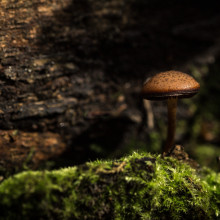
40:49 - Why do plants need fungi to thrive?
Why do plants need fungi to thrive?
This question came up on our forum - and Nadia Radzman had an answer...
Nadia - This particular fungus, we call it Arbuscular Mycorrhiza fungus. Actually a lot of plants can associate with this fungus. More than 80% of land plants could have mutualistic symbiosis with this fungus. So it's a win win situation. So what happens is that if there is low phosphate in the soil, the plants would then engage in this symbiosis with the fungus. And because the fungus has this extensive network of mycelium in the soil, it can actually forage that soil for more phosphate and then transfer it to the plant. So mycelium is this thread-like extension of the fungus, it finds where the phosphate patches are that the plants couldn't find, and then transfers it to the plant. And then in return the plant, who would actually give the carbon nutrient, informs of lipids back to the fungus.
Phil - Why can't plants do that themselves though? Find that particular phosphate?
Nadia - Ah, so sometimes there is this depletion zone around the root. This is because it will take up a lot of the phosphate around it. But then there's also this particular thing where phosphate usually actually just stays in the topsoil. So obviously because the root is going down, it can access something that's really high up. So with the fungus it can actually help that.
Phil - They're almost acting like root extensions, then trying to seek out phosphates?
Nadia - Yes, exactly! Yeah. So mycorrhiza is a fungus. This association was actually back 400 million years ago. It's a very ancient symbiosis and this is even before the land plants actually acquired roots. So it actually helped defenses to gain the nutrients that it needs.
Phil - Chris Smith, did you have a question there?
Chris S - No, I was just gonna say, I like your root extension, I began to think about hair extensions and it's like this is the plant equivalent of hair extensions. This enormously increases the collecting area of the plant. And the amazing thing about all this, because I first encountered this about 20 years ago when I began to read about it and this, this whole barter economy, because the fungus and the plant are trading: I'll give you some nutrient in return for some other. But actually if the fungus tries to rip off the tree, then the tree can actually decide it's not going to trade with that fungus anymore and they can be stingy, can't they? So it's a really clever sort of relationship.
Nadia - Yes, a lot of symbiosis. I like that. They're quite stingy.
Phil - What about the second part of this question though, are these fungal relationships something that's important for farming?
Nadia - So it would clearly help the farming system in a way they'll make it more sustainable because if we think of this fungus helping the plant to acquire more phosphate when there is low phosphate around, you can have reduced usage of phosphate fertilizers. And also what's interesting is that a couple of studies also show that having this fungus around would increase the drought tolerance of this plant, and it also increases the resistance to diseases.
Phil - Is this something that farmers are currently taking into account?
Nadia - Not exactly. Because if we think that there are also pathogenic fungus around...
Phil - What does that mean - pathogenic?
Nadia - Induces diseases to plants.
Phil - So bad fungus, as opposed to the good fungus.
Nadia - I suppose that's bad fungus, yes, while arbuscular mycorrhiza is the good guy. So obviously to deter this bad fungus, the farmers would spray a lot of the crops with fungicide. And if it's a broad spectrum fungicide, what happens is that it will also kill the good guys in the soil. So to prevent that from happening, what farmers could do is actually to use very specific fungicide for a particular pathogenic fungus, the bad guy that is affecting the plant, but only in the leafs. And so the good guys, the good fungus, could thrive in the soil.
Chris S - Nadia, given how important these fungi are, is there any way that a plant has got to make sure that its offspring get the same beneficial fungus?
Nadia - Right? Not exactly. So as I've mentioned before, this particular fungus is called Arbuscular Mycorrhiza fungus. There's another type of fungus which is called Endomycorrhizal fungi. It actually associates with some orchids. So with that, this is very interesting because some orchids would actually need a particular fungus for it to germinate. So what happens is that the seed of the orchid needs to be associated with a very specific fungus and then it would eat up the fungus for it to then grow and germinate.
Phil - A fungus specifically for that one plant. I guess this must be a whole world of different possible relationships.
Nadia - Yeah. So that's why some orchids cannot be grown outside of their habitat because they need that fungus to grow.
Chris S - Chris Rogers?
Chris R - I've heard before that different plants can talk through fungi, they can pass chemicals between different plants. Is that true?
Nadia - It is, yeah. So it's pretty much a hidden network of massive threats under the soil. Right. And the way they knew about this is that a particular tree was fed with a radioactive isotope of carbon. It doesn't occur in nature. So we can trace this, right. And they could actually trace it very, very far away from that one particular tree. So it means that there must be some sort of communication, the network under the soil, the hidden network, through the fungus.
Chris S - So the interpretation is that the radioactive carbon goes into tree number one, let's call it, then trades with this fungus that's around its roots, which then carts off that particular chemical and then delivers it or deposits it or trades it with another tree miles around, and that's how the radioactivity gets spread.
Nadia - Yeah, exactly.
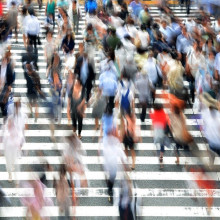
48:40 - Should we limit events to protect the elderly?
Should we limit events to protect the elderly?
Listener Ken got in touch with this question - Chris Smith provided a virologist's perspective...
Chris S - Right. First of all, are elderly people at greater risk? And the answer is that they're at greater risk of complications from this. They're not at greater risk of catching it than anybody else. Everyone's at risk of catching it because no one has immunity and depending upon how sociable you want to be, your risk is going to go up.
Phil - But Ken's point is that these are the people that are most concerned. These are the people that are most vulnerable.
Chris S - Yeah. And so what one has to consider is: I know what my risk is. Therefore, if I'm older, I'm at a higher risk. If I'm younger, I'm at a lower risk and I can make a judgement about whether or not I want to do anything about that. If I decided I want to do something about that, there are some simple practical things you can do. If you live on your own, or you know, just with a partner, then it may be possible to adjust your lifestyle. I was talking to one person the other day who said that what she and her husband have taken to doing because he's at higher risk, is that they will go and do their weekly shop in the evening when they know the shop has fewer people in it, so they're going to bump into fewer members of the public who might be incubating this. That's one thing. Two, you can tell your relatives and your friends to please let you know that they've got a cold or a cough or something before they come over, and in that way you can choose whether or not you want to socialize with people who might be able to infect you with something. And if everyone begins to use their common sense like this: don't go and see each other, don't take the grandchildren over when you've got some symptoms, because it's a fact that with any kind of infectious disease, the more symptomatic you are, the more infectious you are.
Phil - But is there not any argument for containment by limiting these huge events so that it doesn't get into, for example, the town of Cheltenham where Ken might live.
Chris S - There is an argument for doing that, and that's what Italy is trying to do as a huge experiment at the moment. Their approach has been to say, we're going to shut schools for 10 days, we're going to shut universities for 10 days. They've chosen those groups because they've got large groups of individuals who are young individuals who fall into this category, of potentially getting infected but not actually knowing they potentially are infected with this virus, and therefore being able to pass it onto other people. Those children also amounted to a large group who could pass it into their parents who could take it into the workplace, for example. So by reducing activity in those areas of society, they're doing the experiment to see, right, what's that gonna do to the spread of this thing? Is it going to slow it down? At the same time, they're effectively putting a huge chunk of their country into quarantine again to stop movements, and slow down the rate at which this trickles across the population because there's no going back. Now, there's no way we're going to stop this. We all accept that it is going to spread and it's going to basically spread to everybody eventually, but it's the rate at which it does that that matters, and if you can slow down the rate at which it's going across the country and through a population, you can smooth out the spikes because the danger here is, if you get lots of people who get infected all at once, the small minority that will have a problem if there are no healthcare services available because there are so many of them coming all at once. There's a danger that you then get a knock on effect on the health service and then you also get a secondary knock on effect, because, say, if the ambulance is not available for someone with a heart attack, because they're dealing with all these people with say a coronavirus infection, then people start dying of heart attacks. So that's what people are trying to do by doing these sorts of manoeuvers. But we've never been in this position so we just don't know. So it's very hard to say this is the way to deal with this because at the moment we're learning.
Phil - So if it were up to you, what would you say? Keep the Cheltenham festival? Maybe try and call it off, or too early to say?
Chris S - For now, too early to say, because we don't know what the numbers are going to be. We don't know what the level of circulation in the population is at the moment or henceforth. And therefore because we don't know the trajectory, we don't know how many of these measures we're going to have to resort to, to try and slow this thing down.#
Phil - Chris Rogers?
Chris R - Is there a risk that the negative effects of, for example, quarantining a huge number of people, can actually cause significant harm as well?
Chris S - Yeah, because if you've got, say an older person, who's dependent on a group of people caring for them, and those people then eschew that care provision because they're worried about either infecting the older person or getting infected themselves by going out and getting shopping and so on, that other person's going to have a care problem and that could have knock on consequences. Things may be missed, that person may fall over and hurt themselves and not be able to get up and they may go longer before someone comes and helps them. So there will almost certainly be consequences in that respect. And then there's the whole psychological aspect of this. If you talk to people who are on the boat Diamond Princess in Yokohama, they are going stir crazy. I mean it puts a whole new spin on the phrase cabin fever, I know, because you've got these people with coronavirus confined to barracks for two weeks, but they were finding it very tough indeed to be stuck in something resembling their wardrobe. Some of those cabinets didn't even have a window for two weeks and it sounds like a holiday. But believe me talking to those people, they said it absolutely wasn't. And I think that's a very real prospect that we're also going to get social isolation. You're going to get people with mental illness for example, who rely on contact with other people to help them stay well and stay ahead of say addictive problems and things like that. It could have all kinds of far reaching consequences. So we do have to be proportionate and sensible and not unleash the floodgates too quickly on these measures because there is a danger. But then people get complacent. People don't want to comply anymore because they're bored and then it comes roaring back. So that's what we want to try and avoid.

54:13 - Why did neanderthals go extinct?
Why did neanderthals go extinct?
Emma Pomeroy took this question from Megan...
Emma - Well it's a tricky one. Honestly. It's something that we've been debating for decades and I still don't think we have a clear answer. If we go back sort of a number of decades, it was assumed that Neanderthals were not as intelligent as modern humans. And so it's rather coincidental perhaps that Neanderthals go extinct just about the time that modern humans spread and become successful in Europe. So some people have argued, well, perhaps they just weren't as good as catching animals and they weren't as flexible in the kind of plants they could eat. However, the evidence we're getting now is that that gap in sort of cognitive ability, so mental capacity was not so great as we used to assume. We've got evidence for things like decoration of the body in Neanderthals, symbolic things that signal that higher level of intelligence. Some other ideas have been put forward, and these have been somewhat revolutionized actually by studies of genetics and ancient DNA. We can see that among the Neanderthals, especially those just before they went extinct around 40,000 years ago, that genetic diversity is really low. So we can look at Neanderthals from across their range and there's not much variation between them. And that's really important because we know that once species start to lose their genetic diversity, they become very susceptible both to inherited diseases but also infectious diseases. So it's possible that that loss of diversity could actually have led to their extinction.
Phil - What would that have come from though?
Emma - That's another tricky question.
Phil - You get that from inbreeding, that's the main one, correct?
Emma - Yes, exactly. Inbreeding. And what we think must have been happening was that their population levels were very, or relatively low compared to modern humans. Now, why that is again, is a difficult question to answer. It could be because perhaps the rate of reproduction and the rate of population growth was lower. Perhaps it's been suggested that as the climate fluctuated over sort of the centuries and millennia, their preferred habitats kind of became more common so the population could spread out. But then in the intervening periods they got restricted to really small areas and many died out. So over time that variability got less and less.
Phil - Is it possible that it was less passive aggression from us and more, you know, actual aggression?
Emma - Well that's a possibility. So we're not the nicest. We can be very compassionate and nice, but we can do nasty things to each other as well. And there are arguments that, you know, we were involved in extinction of Neanderthals, maybe intentionally, maybe unintentionally. The evidence for an intention of involvement is pretty thin on the ground. We have one Neanderthal from a site called Chandar cave in Iraqi Kurdistan, from around the time that Neanderthals were going extinct, and he has an injury to one of his ribs that comes from a projectile. So traditionally those are associated with our own species, modern humans, as having that ability to make this more kind of advanced technology. So some people have said perhaps that's one example of modern humans killing off Neanderthals.
Phil - The earliest episode of CSI probably to date!
Emma - Well it could be! Another less intentional way that we might have helped to kill off Neanderthals is actually through the spread of disease. So it's been suggested that modern humans, who (we) evolved in Africa, and then we spread out into Europe where Neanderthals were. And probably what we brought with us was a whole load of new diseases that the Neanderthals had never encountered before. So they didn't have the evolved immunity to actually be able to fight off those diseases. Now, in some cases, you know, new diseases come or introduce and they spread and they can be serious, like with coronavirus at the moment. But the rate of mortality is not necessarily huge, but we know of other examples. For example, when Europeans first went to the Americas and took with them smallpox, that had a devastating effect on the native populations there because they'd never been exposed. They had no immune response that had evolved and the genes that you need to be able to fight that off. So maybe we're seeing a similar scenario with Neanderthals and modern humans, especially if the Neanderthals were already rather inbred and perhaps lacking the genetic diversity that would have given them strong immunity.
Related Content
- Previous The plants with three parents
- Next Sick Planet










Comments
Add a comment